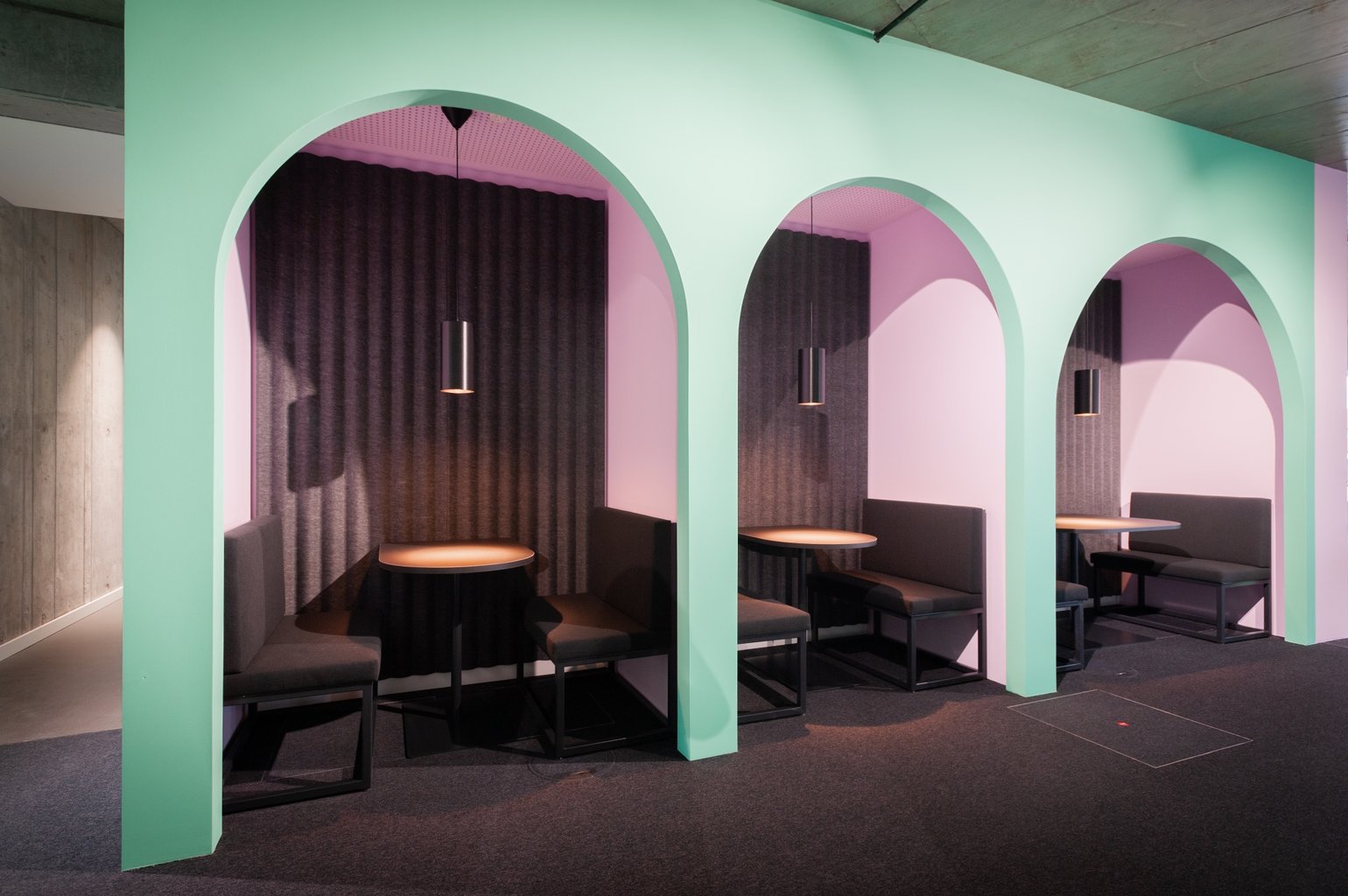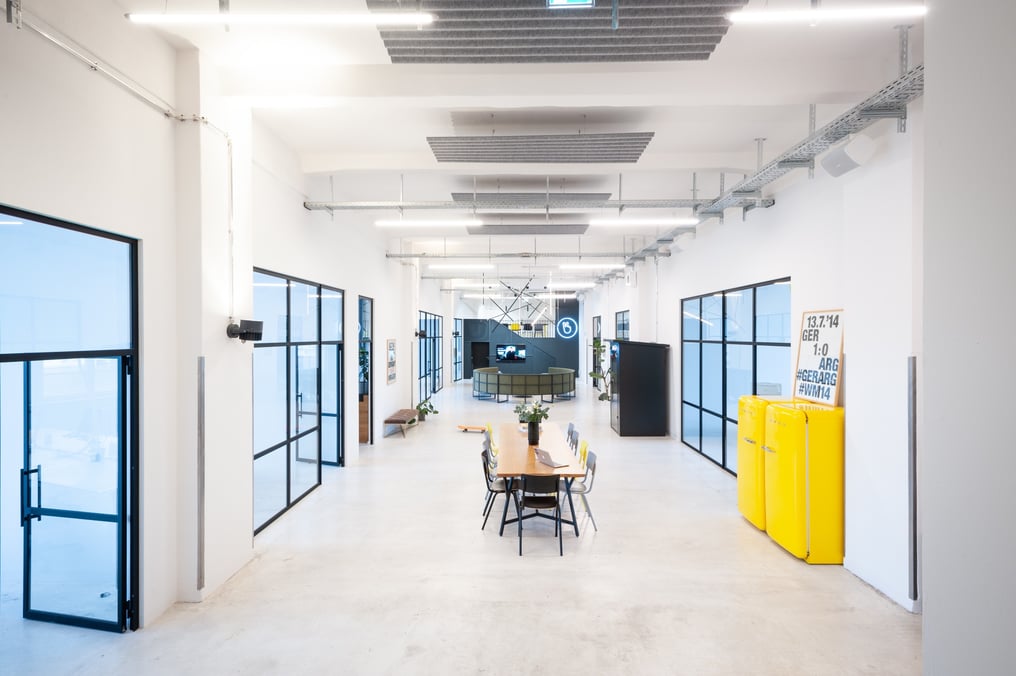Journal
Architects on Intentional Workplaces and the Changing Role of the Office
To dive deeper into Intentional Workplaces, we connected with two architects to hear if their work has changed in the last years. Also, we were curious about their personal work experience.

We sat down with Hanne Hallwaß, interior architect and one of three CEO’s of UNDPLUS, and Anne Asbrand, interior architect at combine, on the topic of Intentional Workplaces and the role of the office.
What are Intentional Workplaces?
Working 5 days a week, from 9 to 5 in the same place, is rare for office workers. Employees now come to the physical workplace when it is needed or wanted. And when they come, they usually have a clear intention.
Because of these changing working habits, architects and designers need to focus on those needs by creating Intentional Workplaces, and enabling them through a physical space. An office should put people at the centre, by giving them a great environment to work in. Where they have the freedom to choose how and where to work. But also a place for social interaction and serendipitous meetings. Creating togetherness and connecting with the company culture.
 How did the client’s request change in the last years, and how do you see Intentional Workplaces in this context?
How did the client’s request change in the last years, and how do you see Intentional Workplaces in this context?
HH: What we do notice among our clients, from small to big companies, is that they want to get their employees back to the office. Not because of control, but because they want to bring people together again. To have more contact between colleagues and build a missing bond between the teams.
At the same time, their working habits and needs have changed. More space is required for shared desks, but also quiet spaces where you can have a call or a one-on-one meeting. So it has become more convenient to develop these smaller, flexible spaces inside bigger offices. We’re working a lot with curtains and acoustic panels to create these private spaces where you can sit and work in a different way and not at a desk. It also gives room for a more colourful alternative to the typical white, black and grey office. Since these companies want their staff to return to the office, they are willing to create more inviting, fun places where people would want to come back to.
Certain tasks can be done from home or online, but having direct and personal access to your colleagues during the day proved to be extremely valuable. It is the fastest way to solve problems and find solutions. Especially when you are working on a concept or a design. Having these short, unplanned meetings for a quick discussion is something that can only be done when you are physically together.
 AA: Clients are looking for ways to schedule office hours with software or apps. Apps where workers can say: I’m in the office on Monday, Tuesday, and Wednesday morning. So that people can book a desk, and the office isn’t getting too crowded.
AA: Clients are looking for ways to schedule office hours with software or apps. Apps where workers can say: I’m in the office on Monday, Tuesday, and Wednesday morning. So that people can book a desk, and the office isn’t getting too crowded.
The other thing we notice is a lot more interest in communal areas. Agile spaces with movable furniture and desk sharing for brainstorming or group sessions. It was quite challenging to organise these activities digitally, behind a screen at home.
We are also thinking about more hybrid concepts. Because for big companies, a lot of space is unused with people working from home, but they are still paying the full rent. So it could be interesting to have a coworking space that other people can rent for a short period. But there are also smaller companies that have grown in the last years and now don’t have enough space for everyone to come back to the office. Employees are unhappy about this and feel like they do not belong there anymore. So they have to move or redesign their current office space to fit the needs of their employers.
What is the role of today’s office?
HH: For me, and I believe for our clients as well, it is the social aspect that is crucial. Everyone appreciates it when the atmosphere is good, and we are having fun at work. Even when it is stressful, it can be a good experience to be together.
Another big aspect that plays a role, especially for young people at the beginning of their career, is learning from more experienced colleagues next to you. When you are at home, on your own, you do not hear other people calling, how they react, what they do, and how they look for solutions. While this is probably the fastest way to learn - with great people next to you, seeing how they respond to challenges. Or getting some help, or asking a quick question. When you are starting somewhere, learning from your colleagues is an essential part of the learning curve, which goes much more naturally when you are sitting next to each other.
AA: I think younger generations are more flexible in how and where they work. Nonetheless, it is still important to have a physical place where people can get together to brainstorm, exchange ideas and get social. And for that, it’s useful to be at the office on a regular basis. To get to know people and see how they work together. That is the only way to create a community feeling and strengthen the company culture. Also, working from home can get lonely, and it is harder to connect with your co-workers.
In our combine office in Berlin, we have a really big kitchen. Even on the busiest days, there is always room to meet and eat. To talk about work, but also private things, and maybe even become friends. I think the kitchen is the most underrated space in an office.

How important are multi-purpose areas for Intentional Workplaces? And how do you make sure people use them?
HH: It is always good to have areas in the office that are not meant for working. Where you can move away from your desk, to somewhere with a comfortable chair and a different view. That doesn’t necessarily have to be the kitchen area, it can also be a multi-purpose spot.
Customers are growingly asking for more inclusive work environments, especially in the multi-purpose areas and the kitchen area. It is important to them to respond to the individual needs of employees and thus create a work environment in which no one is excluded. For us designers, it is therefore important to not only work smart with the given space, but also be sensitive to the subject of inclusivity. Therefore, ultimately, a consistent and increased use is provided.
AA: A lot of my work is thinking about how office spaces are being used throughout the day. For these multi-purpose spaces, you have to make sure that they are connected to the way how you enter a space or building. We design these areas at the entrance or the centre. Where you start or end your day, or where the coffee machine is. In that way, it feels natural to have a five-minute break. To grab a chair and just talk to each other, or stand at the window.
But it is different for every company. In a creative company, you need spaces for exchanging ideas and meetings. But it is not equally important for all businesses. You also need to have enough space for all these different areas. But I do think that every company benefits from a good kitchen.
What are the essentials for a good office that people want to come back to?
HH: If someone is planning a redesign, involve your employees in the process. Ask them about their wishes for a new workplace. Make a wish list and see what is doable. What are the must-haves, and which extra wishes you can incorporate. This is essential for creating an office that people want to come back to.
Next to that, with working from home, everybody learned to appreciate their office chair, their height-adjustable desk, just to have everything you need within grasp. For us, architects, having access to all your samples is very important! To see, feel and touch all the materials. You can not do all of that remotely.
AA: Now that it is possible again, I also think that it is important that people come back to the office from time to time. Especially for beginners, to get a connection with your co-workers and the company, you need to be together once or twice a week.
Good location is also a defining factor in making sure that employees come to the office. Make sure it is easily accessible or well connected with the city, with food places and greenery around. Next to that, you should have a community area, either a kitchen or breakout area. There should also be separate rooms for meetings with big whiteboards, that can be closed, so the meetings don’t bother anyone.
If you have shared desks, it is also smart to have lockers for personal belongings. Desks that are height adjustable are also essential because most people do not have those at home. The same goes for having two screens on each desk, where you can just plug in your laptop and start working.
Need some inspiration on Intentional Workplaces?
We created a fictional office that embodies our vision on Intentional Workplaces. For every space, we broke down what the intention is, what furniture we used and why we chose certain colours and materials. Download this Inspiration Paper via the button below.



